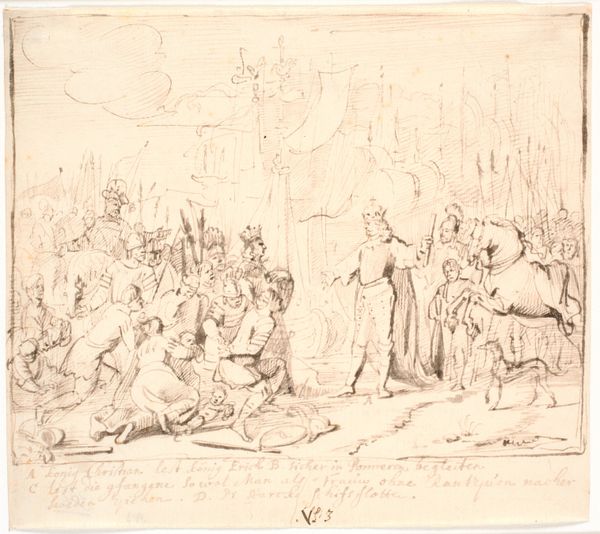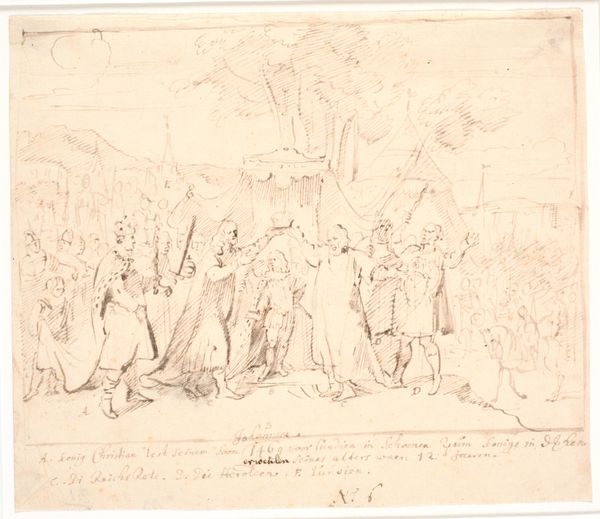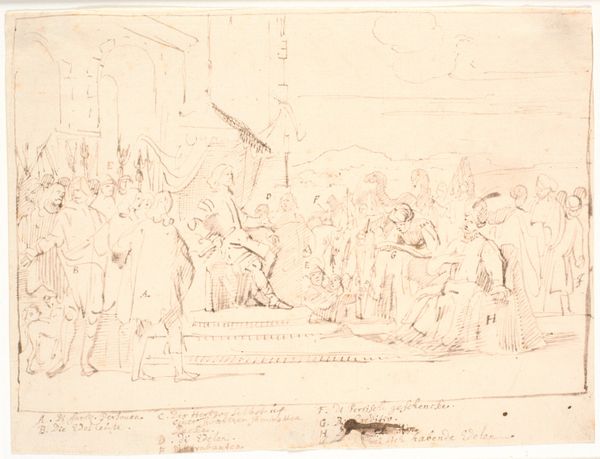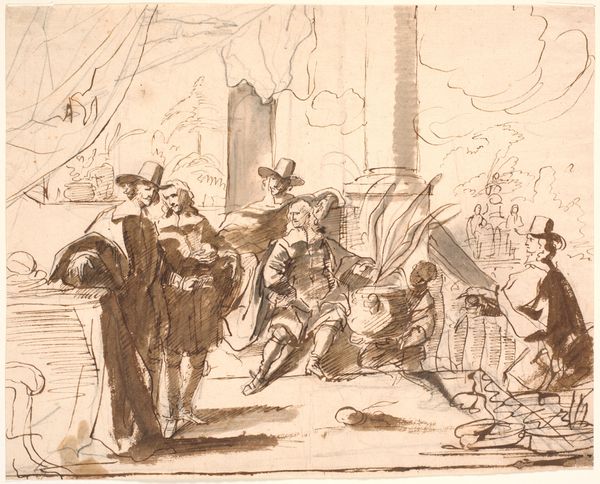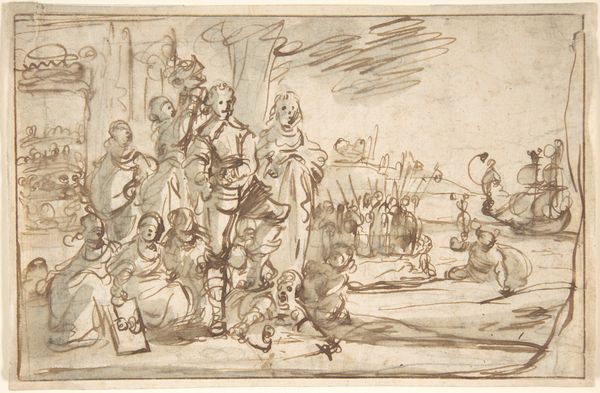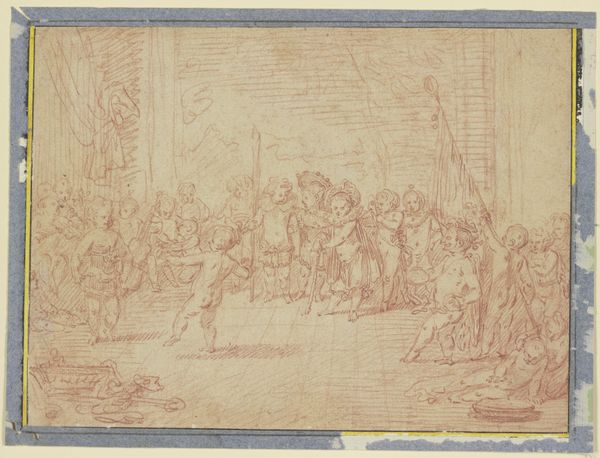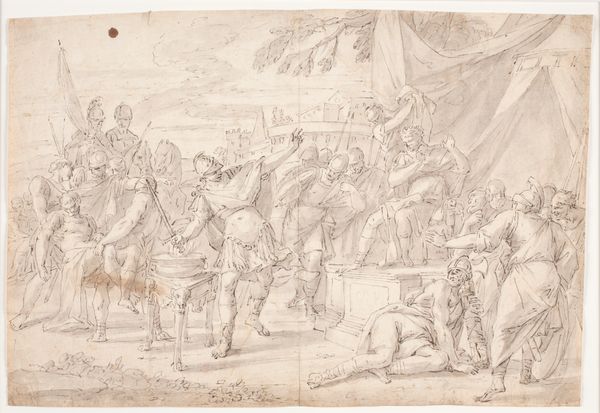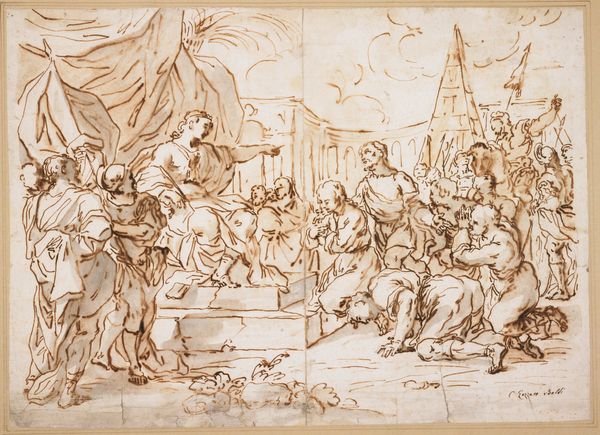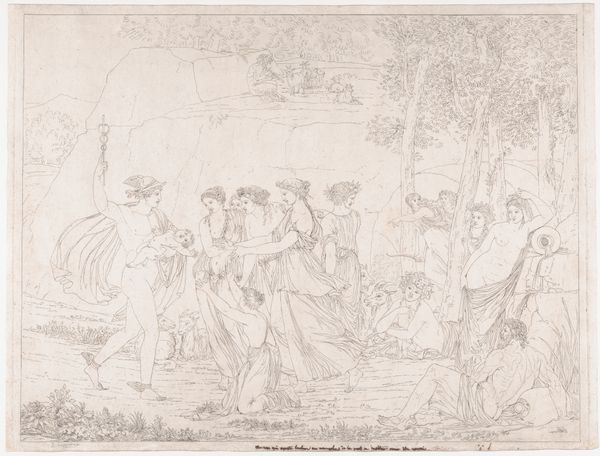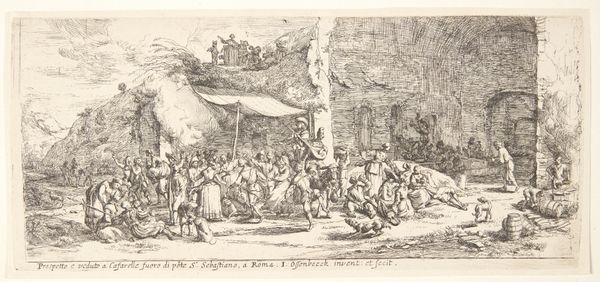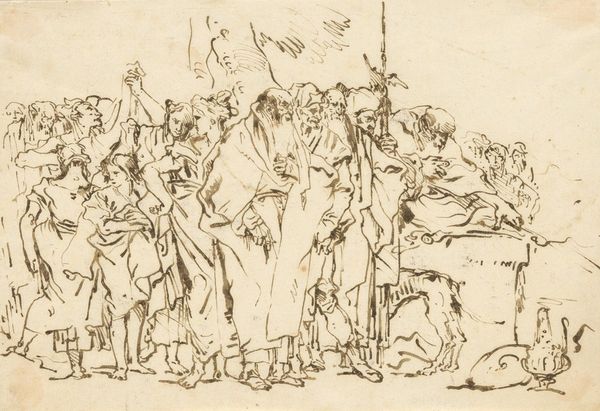
Christian I hyldes som konge af Sverige, maj 1458 1663 - 1666
0:00
0:00
drawing, ink
#
drawing
#
ink drawing
#
baroque
#
figuration
#
ink
#
history-painting
Dimensions: 189 mm (height) x 246 mm (width) (bladmaal)
Curator: Before us we have Jürger Ovens’ ink drawing, "Christian I hyldes som konge af Sverige, maj 1458," dating back to 1663-1666. It depicts the moment Christian I is hailed as King of Sweden. Editor: It’s a wonderfully dynamic composition. The sweeping lines really create a sense of movement. But, as a drawing, it feels incomplete, more like a sketch than a finished work, tonally it appears unbalanced. Curator: Well, consider the historical context. This piece wasn't intended as a standalone artwork. Ovens was capturing a pivotal moment in the complicated relationships of Scandinavian royals; a direct commentary on power, succession, and identity of rulers. This very sketch is an articulation of his views on inherited supremacy. Editor: I can see that the page is densely packed with characters, all converging towards the king. His robe certainly stands out, dominating the right side of the composition and drawing my eyes into the drama as figures recede into the blurry depths, each stroke carefully placed to create space and definition of his dominant cape. Curator: And think about who these characters are meant to be! The clergy, soldiers, noblemen—all participants in a power dynamic that deeply impacted 15th-century society. And what is omitted; we're not given clear depiction of race or gender of individuals. Editor: That very point brings the sketch to life, not in the realistic, mimetic sense but in that there is freedom and movement within the application. I sense the excitement; it's not just a dry recounting of a historical event but an experience delivered through pen and ink. The work certainly speaks through gesture. The upward stretch of hands conveys that powerful announcement. Curator: Absolutely. It really serves as a reminder that history isn't some neutral, objective account. It's created with bias. Through careful choices in figuration, and a certain kind of baroque extravagance we understand how Ovens views a key event in Sweden's political theater. Editor: Agreed, a powerful rendering brought together through the very language of line and the relationship it creates in space.
Comments
No comments
Be the first to comment and join the conversation on the ultimate creative platform.
